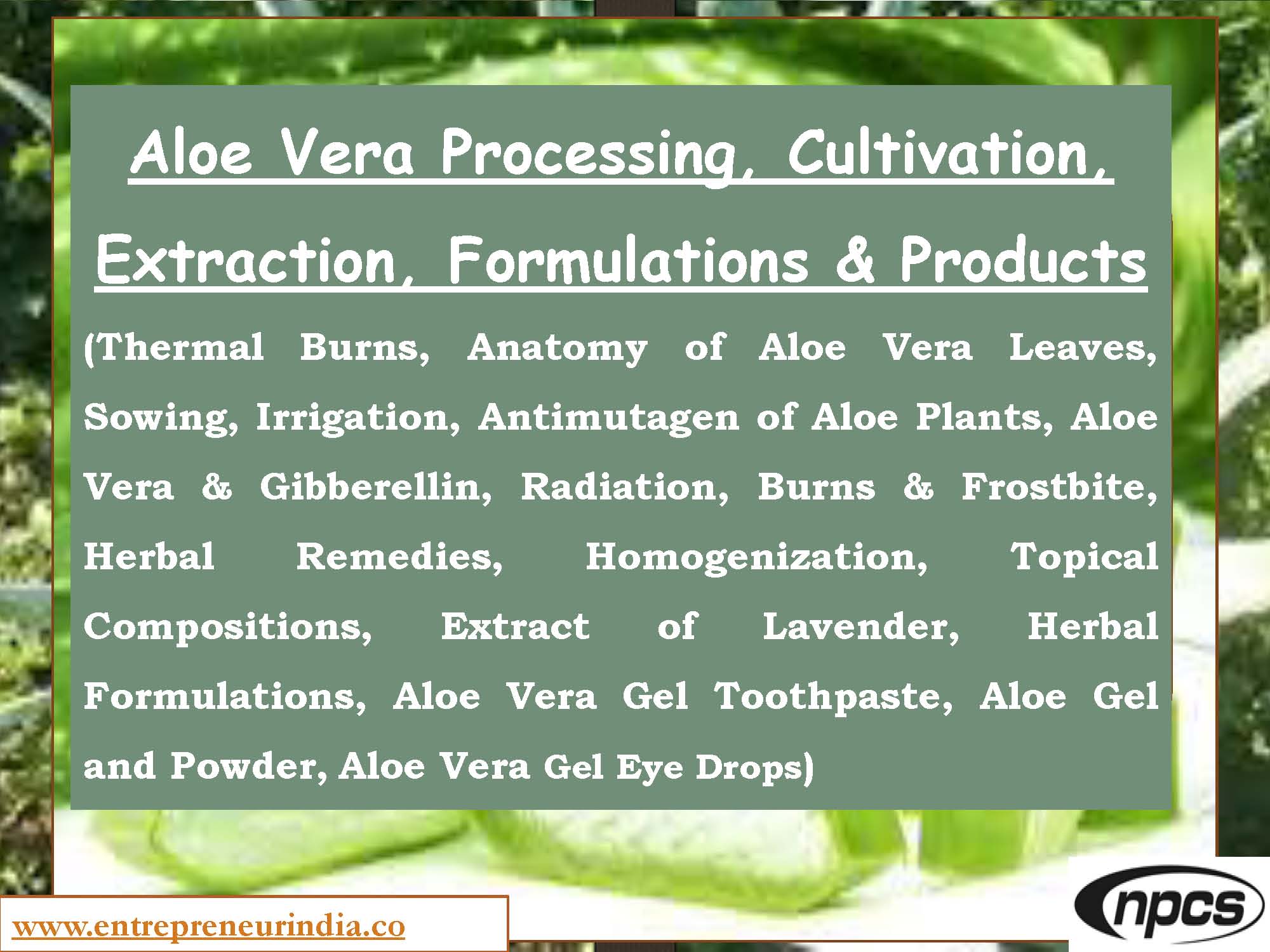
Aloe Vera is one of the most commercially significant medicinal plants known for its wide range of health, cosmetic, and pharmaceutical applications. Its fleshy leaves are packed with bioactive compounds, making it a natural remedy for numerous ailments and a base ingredient for high-demand herbal formulations. From treating thermal burns to enhancing skin health, Aloe Vera holds an unparalleled place in traditional and modern medicine. Moreover, its easy cultivation and high market value make it a favored crop among farmers and entrepreneurs alike. This article explores Aloe Vera’s anatomy, cultivation methods, extraction techniques, formulations, and medicinal benefits, backed by scientific insights and industry trends.
Aloe Vera: A Complete Guide to Cultivation, Extraction & Medicinal Use
Aloe Vera thrives in arid and semi-arid regions, making it a resilient plant requiring minimal maintenance. Its increasing global demand has pushed forward both small-scale and industrial farming. Understanding its cultivation cycle and medicinal components helps farmers and manufacturers unlock its full potential.
See Also : Copper Wire
Anatomy of Aloe Vera Leaves
The leaf of the Aloe Vera plant is composed of three main layers: the rind, the latex (yellow sap), and the gel. The rind is the tough outer protective layer, while the latex contains aloin—a compound known for its laxative effects. The innermost gel is rich in water, vitamins, enzymes, amino acids, and polysaccharides. This gel is the primary material used in Aloe Vera processing. Moreover, the presence of gibberellins and auxins contributes to its anti-inflammatory and wound-healing properties, which explains its widespread use in topical formulations.
Cultivation: Sowing and Irrigation
Aloe Vera is best cultivated in well-drained sandy or loamy soils with a pH range of 7–8. The ideal planting time is during warm months, preferably March to June in India. Suckers or root sprouts are the most common propagation methods. The plant prefers moderate irrigation, usually once every 2–3 weeks, depending on soil moisture. Moreover, waterlogging should be strictly avoided to prevent root rot. With minimal fertilizer use and high drought tolerance, Aloe Vera cultivation becomes both sustainable and cost-effective.
Extraction and Processing of Aloe Vera
The Aloe Vera extraction process begins shortly after harvesting to preserve the bioactive compounds. Typically, leaves are washed, filleted, and either cold-pressed or subjected to enzymatic treatment to extract the inner gel. The two main products derived from Aloe Vera extraction are gel and juice. These are further processed into concentrates, powders, or stabilized gel using dehydration and preservation techniques. Moreover, maintaining a cold chain is crucial to prevent oxidation and maintain efficacy during commercial packaging.
Aloe Vera Formulations and Products
Aloe Vera is incorporated into a wide range of formulations including:
-
Topical gels and creams for burns, cuts, and skin hydration
-
Aloe-based juices for digestion and detox
-
Cosmetics such as face washes, shampoos, and moisturizers
-
Health supplements in capsule or powder form
-
Soaps and hand sanitizers with antimicrobial effects
Moreover, the presence of antioxidants and vitamins like B12, C, and E enhances its formulation versatility. Its use in natural product lines, ayurvedic therapies, and even pet care products makes Aloe Vera processing a high-ROI venture.
Medicinal Applications: From Thermal Burns to Antimutagenic Effects
Aloe Vera has been traditionally used to treat thermal burns, thanks to its cooling and cell-regenerating properties. The gel forms a protective barrier, reduces inflammation, and speeds up wound healing. In addition, anthraquinones, glycoproteins, and gibberellins contribute to its antibacterial and anti-inflammatory effects. Recent studies also highlight its antimutagenic potential, suggesting that Aloe Vera may protect against DNA damage caused by harmful substances. Furthermore, its regular use supports immune modulation, making it beneficial in long-term skin and gut health management.
Role of Gibberellin and RAD in Aloe Plants
Gibberellins, a group of plant hormones found in Aloe Vera, promote cell elongation, wound healing, and anti-inflammatory activity. These natural growth regulators are responsible for the regenerative properties that make Aloe so effective in treating skin injuries. Additionally, RAD (Reactive Antioxidant Defense) refers to Aloe Vera’s natural ability to counter oxidative stress, further contributing to its medicinal efficacy. These bio-physiological features explain why Aloe Vera is both a healing agent and a plant of pharmacological interest.
Read More :E-Waste Recycling
Conclusion
Aloe Vera is more than just a houseplant—it’s a bioactive powerhouse with incredible potential across industries. From easy cultivation to diverse formulations, its uses span cosmetics, medicine, food, and wellness products. Understanding the anatomy of the leaves, the role of gibberellins, and the antimutagenic effects of the plant opens new doors for scientific and commercial exploration. Moreover, Aloe Vera processing is a scalable, eco-friendly business model with rising global demand. Whether you’re a farmer, entrepreneur, or researcher, investing in Aloe Vera can yield long-term benefits for both health and income.





